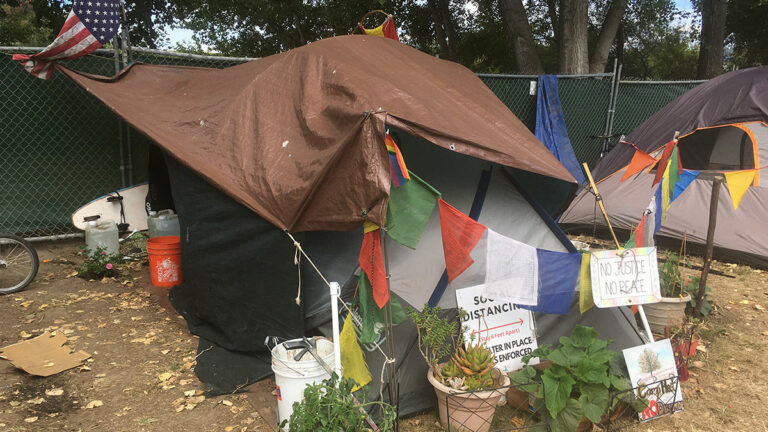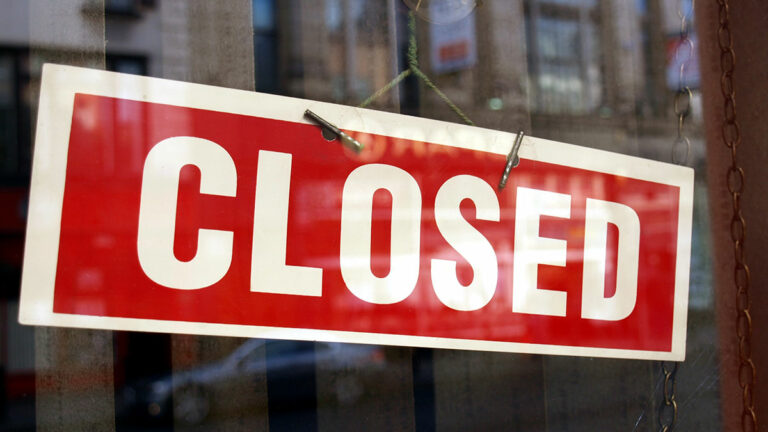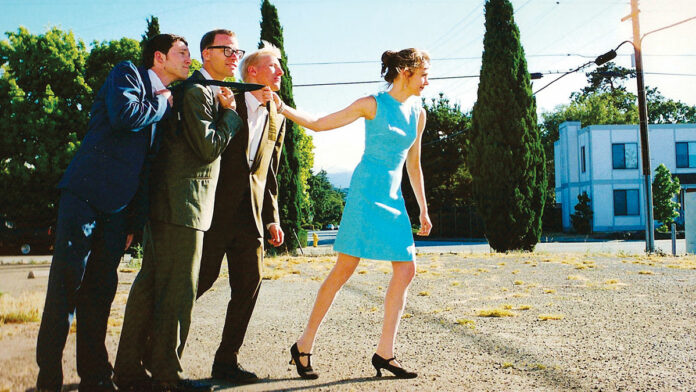The day I was asked to write a health story in the middle of a health crisis, I retreated to my mother’s garden to panic-weed the arugula.
Afterward, barefoot in the dirt and contemplating a morning glory vine, I noticed my anxiety had loosened its grip. I must have known this would happen, for I’d spent the last 12 weeks in that asylum of growth and decay—talking to plants, thinking, and more often than not, looking for the shovel I just had in my hands.
Evidently, I’m far from the only one who’s turned to gardening as therapy this year. And while the seeds I planted that day are now flowering bean stalks, I still haven’t been able to separate the psychological impact of the global, and acutely national, crisis we’re in from the topic of health. So, I gave up trying.
With grimey fingernails, I dialed Dr. Dawn Motyka, a Santa Cruz-based physician and host of the radio show Ask Dr Dawn, and I told her my theory: Our psyches are collectively experiencing the trauma of an unprecedented global breakdown. She didn’t disagree, but over the course of a two-hour Zoom interview and several phone calls, she introduced a solution-oriented perspective on health in the new paradigm that is, dare I say, empowering.
“The status quo is gone forever,” Motyka says. “And I think we can shift it into a time of great healing, because we’re not distracted by the trivial things.”
Indeed, if ever there were a spiritual call to becoming a better, healthier, happier, and more authentic human being, it is now.
Reset Button
At its most visceral, the act of facing one’s own mortality—which we’ve all grown accustomed to doing every day now—is its own motivating factor, and it may just be an ace up our sleeves.
“Use it as a pivot point,” Motyka says. “‘Since I’m not dead now, what do I need to shift? What will I regret not having done, what do I need to make amends for?’ Especially because our mortality is confronting us, this is not a good time to leave things unsaid. It is not a time to be guilty and avoidant.”
To our advantage, seizing the day becomes a whole lot easier when your schedule has become a tabula rasa.
“It’s a bit like that story about putting a frog in water and turning it up a little at a time, and the frog doesn’t realize it’s boiling to death,” Motyka says of our pre-pandemic pace and way of life—which was not only unhealthy to humans but also to the natural world that many of us have since rediscovered.
“The gift of Covid-19 has been the absence of the kind of moderate to high level of distracting buzz that we’ve lived in,” she says. “There’d been so many things to do, see, watch, and attend to, plus social engagements, we had lapsed into a sort of reactive hypnosis. We were just responding to texts and emails and consuming things, but we weren’t really being good critical thinkers.”
As of late July, when the American death toll had surpassed 150,000, Black people were dying of the coronavirus at nearly three times the rate of white people. Motyka credits the extra time people have had to reassess their values as a variable that’s empowered and enabled current movements for social justice.
She likens the phenomenon to an abstract version of Marie Kondo’s The Life-Changing Magic of Tidying Up: The Japanese Art of Decluttering and Organizing. On the individual level, it is an introspective weeding out of “junk” activities in exchange for ones that feed the soul.
“I think we can all use this as a moment to pause and maybe redirect our energies into more fertile, more nutritious directions,” Motyka says. “Find what strengthens you, and do more of it.”
To that end, the pandemic seems to have brought about the largest gardening trend since World War II’s Victory Garden movement. That movement, supported by ad campaigns and governmental funding, resulted in 40% of the nation’s vegetable supply being grown in home gardens.
“That’s actually probably a good thing,” says Renee Shepherd of Renee’s Garden Seeds, when I lament that there has not been a governmental campaign for gardening during the current crisis. Nevertheless, she reports a 700% increase in seed sales at the height of the pandemic—and although it’s tapered off slightly, it remains at an all-time high. “It’s unprecedented, and it’s never happened this big,” says Shepherd, who has been in business since 1985. “I’ve called up other members of the Home Garden Seed Association, and everyone’s seed business shot up 300, 400, and 500% this spring.”
Whether or not the grassroots trend will stick has yet to be seen. But the shift is profound when you consider that the nation’s last gardening resurgence, during the recession in 2009, saw just a 40% increase in seed sales, reported by both Renee’s Garden Seeds and Burpee.
Gardening, with its therapeutic flow-state and health-boosting outcome, certainly fits the bill, but Motyka says any creative, substantive activity is far better for our health right now than zoning out on Game of Thrones reruns or the “colorful brain candy” of social media we all carry around in our pockets.
“Nutrition, lowering your stress, doing something creative, feeling happy and joyful—these are all things that actually make your immune system work better,” Motyka says.
At self care’s most basic, she urges us not to slack on personal hygiene, as she’s seen an uptick in bacterial skin infections since the pandemic began, which she correlates with sleeping in the same clothes you’ve worn several days in a row. Don’t do this.
Healing a Divided Populace
So what do we do until vaccines—of which there will be “an embarrassment of riches” when it comes to options, Motyka says—arrive sometime in the next 18 months?
For one, we should continue to soak up the great outdoors. “It’s very evident that it’s about concentration—and if you can dilute the dose (of the virus), it doesn’t make you sick,” Motyka says.
The natural experiments have been done, and we now know that the coronavirus does not spread well outside. Do continue to wear your masks and socially distance—and we may very well see a light flu season as a result. And, she says, you can stop glaring at people who are running or riding their bikes outside without masks, “end of story.”
At a time like this, it is not only irresponsible but also dangerous to pass on any coronavirus information that you have not vetted for credibility. “Check the source, go to their website. Are they qualified? Are they credible? Are they selling something?”
“In fact, I suspect that many of the strongest advocates for not wearing masks are themselves being duped and really don’t understand that they’re the unwitting shills for adverse foreign powers who are trying to weaken our country—and very successfully, I might add,” Motyka says. “They found a way to play to our weaknesses, and we need to try to heal that. And I think one way to heal it is to be kind to every single person that crosses your path.”
As it turns out, being kind to others has been shown to boost levels of secretory immunoglobulin A, an important immune system antibody. And compassion, the feeling that motivates a kind act, has been found to have anti-inflammatory properties, since it stimulates the vagus nerve.
“You want to kind of be moderate, be mellow, seek out joy, avoid turmoil. Those are all good rules for living anyway, but in a time of a pandemic they’re real survival rules,” Motyka says.
According to Santa Cruz-based writer and consciousness researcher David Jay Brown, psilocybin mushrooms, which have been decriminalized in Santa Cruz since January, have become another popular way for some people to cope with the consequences of the pandemic.
“People report that the enchanted fungi can help to psychologically renew and empower them, and to shift their perspective in a more positive direction, which can be immensely helpful during these dark, scary, and uncertain times,” he writes in an email. Studies have shown that the active component in the mushroom can not only help to alleviate depression, but also enhance immune function and foster a greater sense of openness and connection to others, he adds.
The Post-Corona World
It’s like the Beatles song, says Motyka, and she launches into “You were only waiting for this moment to arise.” We’ve known about the potential for a widespread pandemic, basically since AIDS.
“It’s actually late, in my opinion,” she says. “I think we’ve dodged the bullet for a very long time.”
Well, you’re allowed to screw up with your first child, she says—and screw up, we have. “We’ve consistently, at every decision point, made the wrong call. The governors made the right call with the shutdown. That was never ordered at the federal level,” says Motyka, who believes there have been too many federal roadblocks toward progress in the fight against coronavirus in this country.
Though global air travel might never return to what it was now that everyone has learned to Zoom, Motyka thinks artificial intelligence systems that monitor human temperatures at airports will be critical moving forward.
“The stuff we do for customs and drugs, we’re now going to have to view imported diseases as another kind of import that we need to be surveying,” she says.
“And we have to have an international epidemic treaty, with teeth in it, that says you fess up,” she says. “Whatever is going on, you reveal it to the world, no fair trying to hide it. That was one big mistake—don’t stonewall this stuff. When you do, you give it a chance to get rolling, which is a bad idea.”
She also believes that vaccines should be shared by international treaty, and that Homeland Security’s Obama-era pandemic preparedness structures, which President Donald Trump dismissed upon taking office, must be reestablished.
If Trump is voted out of office in November, the next two years are crucial.
“Nothing happens if we don’t get those two years. So let’s assume we’ve got the two years. I hope that they are thinking big. We could do a Green New Deal, and we could invest more money in infrastructure, and we need to be really careful that social justice principles happen this time around. The alignment for that I think is good,” she says. “We have all been given a really big kick in the ass, and we need to develop our systems.”
























